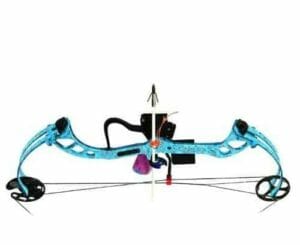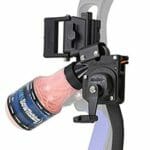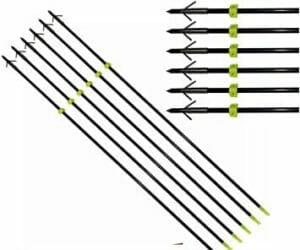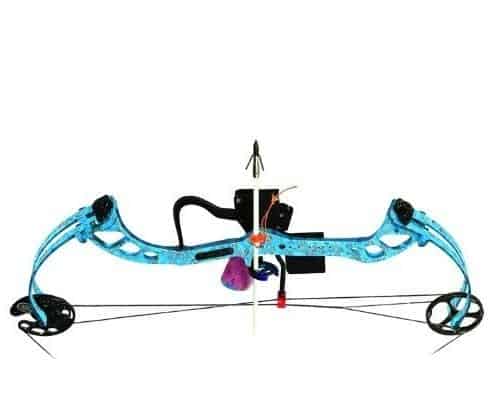If you’re a novice bowfisher looking to jump into the bowfishing world, here are some bowfishing tips to help you get started.
1. Invest in a Good Bow

The most popular types of bows used for bowfishing are recurve and compound bows. Recurve bows are often more affordable, lightweight and easy to carry around. Compound bows are often heavier, but they can give you faster arrow speeds. Regardless of which bow type to choose, you need to have a low draw weight of 30-50 pounds for bowfishing to help reduce fatigue. It’s also important to dedicate a bow for bowfishing. Bows used for fishing are subject to harsher conditions than bows used for hunting. Although you can buy kits to transform hunting recurve bows into bowfishing bows, it’s best to invest in a bow that has the specialized equipment needed for bowfishing.
2. Finding a Reel

Be sure to find a bowfishing reel that fits your skill level and that you feel comfortable using. Retriever/bottle reels are a great choice for beginners because they’re easier to use than spin cast reels. Even if you forget to engage the reel, you won’t cause any damage to your equipment. However, reeling in fish with a bottle reel can be more difficult and sometimes you’ll have to hand-line your fish in. Spin cast reels need to be set to a “free spool” before you shoot the arrow to ensure that the line will feed freely. If you forget, then the line could break and prevent the arrow from leaving the bow.
3. Mounting your Reel
Mounting your reel will ensure that it stays securely on your bow. You may find reel adapters or tape-on reels available, but a reel mount/seat will be your best option to keep your reel in place. Reel mounts can be easily attached to the front stabilizer bushing of your bow, but if your bow doesn’t come with one, then you’ll have to drill holes to attach your reel mount. It’s important to invest in a high-quality reel mount because bowfishing equipment is subject to harsher conditions than other hunting or fishing gear.
4. Don’t Cheap Out on your Line
It’s important to invest in a strong line for your reel to ensure that you don’t lose any fish from a line malfunction. A braided Spectra/HMDPE (high molecular density polyethylene) line will be your most durable option because it’s considered 15 times stronger than steel. It’s highly resistant to UV rays, abrasion, chemicals and salt water. Dacron/polytrimethylene terephthalate lines are not recommended because they’re weaker than HMDPE lines. They tend to fray more easily and prone to mildew if not dried properly after each use. Since Dacron lines retain water, they can also negatively affect the flight of your arrow.
5. Use Durable Arrows and an Arrow Rest

The best bowfishing arrows will have a heavier weight, stiffer spine and a small hole drilled in the nock end of the shaft. The small hole is necessary tie a bowfishing line or to screw on a stopper for a safety slide system. The most common types of arrows are fiberglass, carbon, carbon-spined and aluminum. Since bowfishing arrows are heavier than regular hunting arrows, arrow rests are a great investment to make. They ensure that your arrows stay in place and prevent them from falling out as you draw to shoot
6. Fingers Versus a Release
You’ll find some bows with a mechanical release that help improve shooting accuracy, but most bowfishers would rather shoot with their fingers. Shooting with fingers is faster and will increase your success rate of catching fish. Unlike most prey found on land, fish are fast moving targets, so speed is essential when trying to kill them. To shoot effectively with your fingers, use your index, middle and ring finger to draw the bowstring back.
7. Sights are Not a Necessity
For regular hunting bows, sights are a great investment to improve your aim and shooting accuracy. However, the opposite is true for bowfishing. With bowfishing you have to take into account refraction and the depth of your target. You’ll need to make instant calculations and shoot instinctively. A sight is not necessary for bowfishing, and most would consider it an inconvenience to bring along.
8. Polarized Glasses Come in Handy
For warm, sunny days out on the water, polarized sunglasses with help increase your visibility. Without glasses, the sun’s bright rays make it harder to look underwater. However, with polarized glasses, the sun’s vertical rays reflecting off of the water will be redirected horizontally. This essentially eliminates glare and allows you to see your targets more clearly in deeper levels of water.
9. Go Night Fishing with LED Lights

Don’t be limited to daylight hours to go bowfishing, instead, invest in a good LED light that will give you enough visibility to fish at night. Be sure to find an LED light that’s waterproof and durable enough to withstand the outdoor elements. Since you’ll be out on the water, you’ll need an LED driver that will save you power by using less amps to drive the front of the light. This way, you won’t need to use a large battery bank or generator. It’s also good to remember that cold white lights are best used for clearer waters, while warm white lights are ideal for water with suspended debris.
10. Practice Makes Perfect
Bowfishing requires a lot of time and practice until you can master aiming techniques. Refraction and depth of targets are large obstacles when it comes to bowfishing. You will need to learn how to gauge depth and compensate your shots accordingly. Before you go out bowfishing, it’s also important to find a good location to catch fish. You should ask yourself questions, such as: What is the vegetation in the water like?What time of year is it?And, what kind of fish are in the water? To become a better bowfisher, you not only need to practice your aiming techniques, but also need to plan trips to increase your success rate of catching fish.
https://www.youtube.com/watch?v=g9B-2M6BnLo
Final Thoughts
We hope that these bowfishing tips will be helpful for all of your fishing trips that have yet to unfold!

